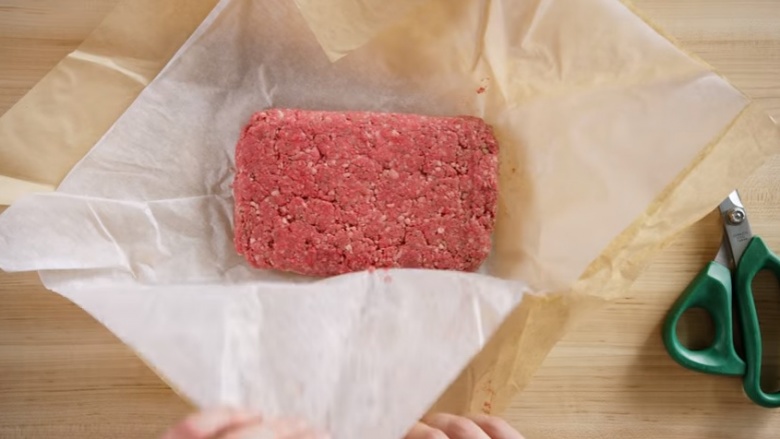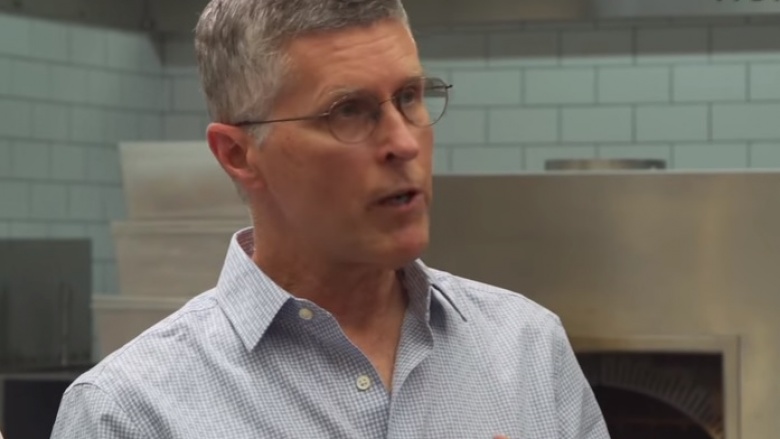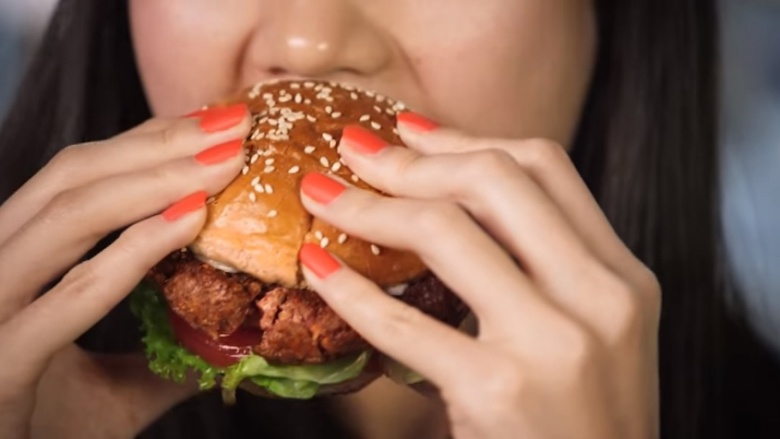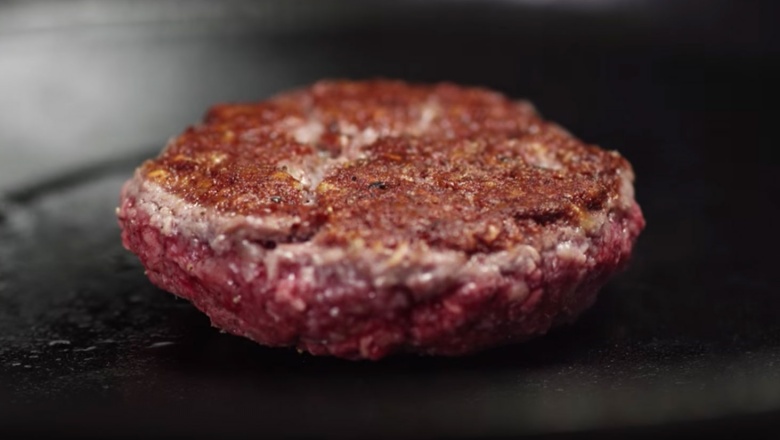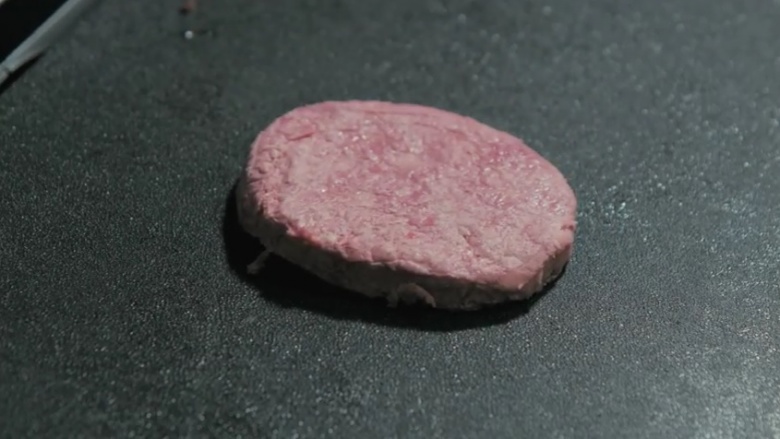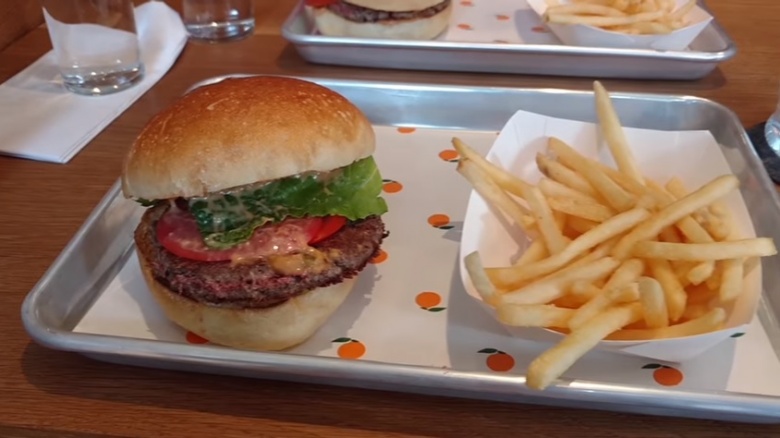How Science Made The Impossible Burger Possible
The burger is that most universally beloved and sturdy of foods because it's just so malleable. Whatever you want your burger to be, it will be. And now, we're at the dawn of a new age that will either revolutionize the burger yet again, or label its latest incarnation an impostor to be exiled to the American food graveyard alongside New Coke and Pepsi Clear. Behold: the Impossible Burger.
What is an Impossible Burger?
The Impossible Burger is the kind of chemistry experiment that would happen if you Gordon Ramsey teamed up Viktor Frankenstein. It's a patty that supposedly looks, tastes, smells, and even bleeds like meat, but isn't. Instead of a glorious hunk of ground USDA beef, it's made entirely out of plant-based materials, including wheat, coconut oil, potato protein, soy protein isolate, and a little known molecule known as heme, which is how the burger is able to simulate the meaty original. Heme is responsible for our blood carrying oxygen, and which gives it its red coloration. And now, it's diversifying its portfolio.
Who made the Impossible Burger?
The Impossible Burger is the product of more than five years of research by the burger-loving mad scientists at Impossible Foods, a California-based laboratory that is the brainchild of Stanford University biochemist, Patrick O. Brown. Dr. Brown (he had both a Ph.D and an M.D.) teamed up with a number of scientists, engineers, chefs, farmers in order to crack the code of the meatless hamburger. The goal was to create a burger experience that would sway not just vegetarians or vegans away from the awful lies they call "veggie burgers," but the most challenging critics of all: the American meat eater. In order to do this, Brown and friends had to find a way to simulate every aspect of the original. They had to figure out what were the elements of a traditional burger and how could they hack them so they could replicate them with a plant-based patty.
Yes, it looks and smells just like a real burger
In order to replicate the smell of a cooking piece of meat, Impossible Foods scientists cooked actual meat and attempted to isolate the individual smells that make a hamburger smell like, well, a hamburger. They alsoattempted to replicate the burger's appearance by incorporating the aforementioned heme molecule. To cheaply produce heme on a massive scale, Brown's group decided to transplant a gene from soybeans into yeast cells, which is able to produce vast amounts of the red stuff. And yes, the inclusion of yeast in this process brings your burger even closer to your beer, meaning that we may be reaching a barbecue singularity.
Cooking and tasting
When it came time to figure out how to recreate how a burger tastes, the scientists turned to the burger's old friend, fat. In regular burgers, the cooking process melts the fat that is marbled inside the ground meat, giving the burger much of its flavor and mouth feel. For the Impossible Burger, scientists replaced the animal fat with chips of coconut oil that, upon heating, would melt and seep through the rest of the patty. This would make it sizzle in the pan and keep it moist for when it hit your tongue. Potato protein was then used to create the effect that meat undergoes when it's cooked, firming up throughout the patty and giving a slight char to the exterior.
Finally, to make the meat taste a reality, the scientists again turned to heme, which was the key flavoring ingredient in the process and was the final piece of the puzzle in making a mighty meatless burger.
Why make the Impossible Burger?
The good people at Impossible Foods claim that the reason they broke out their chemistry sets to create the Impossible Burger is threefold: nutrition, economics, and environment. Since their burgers aren't made from cows, their patties aren't treated with hormones or antibiotics. They will, however, pack more protein, fewer calories, and less fat than your standard-issue burger, which is generally an 80/20 split of meat to fat. As meat has become more expensive, Brown's thought is that meat-loving Americans are less likely to cut meat out of their diets, and are more likely to opt of a cheaper alternative that replicates the experience of eating a real hamburger.
More importantly, cutting out the bovine middle man will dramatically reduce the resources needed to make each patty. By their estimations, Impossible Foods says that their patties will need only 25% of the water, 5% of the land, and 13% of the greenhouse gas emissions that would be needed to make the same patty from cows.
Where can you find an Impossible Burger?
Originally, the only place you could get your tongue on this technological marvel was in the city so nice they named it twice: New York, New York, at celebrity chef David Chang's Momofuku Nishi. The dish ran a not-unreasonable $12 (including fries). The number of burgers are limited each day and are available for brunch, lunch, and happy hour on a first-come-first-serve basis. But fear not, West Coasters! Impossible Burgers is also sizzling at establishments out your direction, and is available at all Wahlburgers locations for anyone who wants to get a taste of the Impossible.

